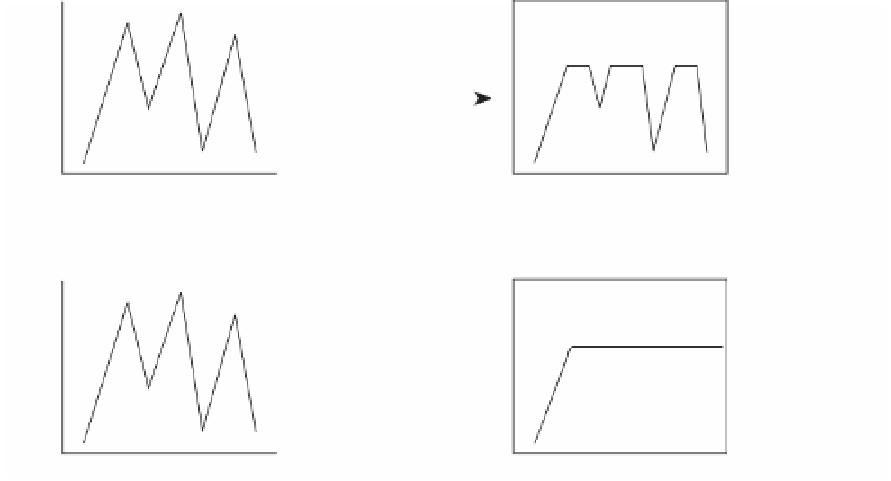Information Technology Reference
In-Depth Information
Congestion management:
These queuing algorithms segregate traffic and use a
determined method to prioritize traffic. Examples are weighted fair queuing (WFQ),
priority queuing (PQ), custom queuing (CQ), class-based WFQ (CBWFQ), and low-
latency queuing (LLQ).
■
Link efficiency:
To o l s u s e d t o i m p r o v e Q o S c h a r a c t e r i s t i c s o n s p e c i f i c l i n k s w i t h i n a
network. Examples are Compressed RTP and LFI.
■
Traffic
Traffic
Policing
Time
Time
Traffic
Traffic
Shaping
Time
Time
Figure 14-25
Policing and Shaping of Traffic
Several QoS and bandwidth management mechanisms are used on VoIP networks:
cRTP
■
IEEE 802.1Q/P
■
RSVP
■
LFI
■
LLQ
■
Auto QoS
■
cRTP
cRTP was covered in an earlier section. It compresses the IP/UDP/RTP headers from 40
bytes to 2 or 4 bytes. It is configured on a link-to-link basis. Cisco recommends using
cRTP for links lower than 768 kbps. Do not configure cRTP if the router CPU is above 75
percent utilization.
IEEE 802.1P
The IEEE 802.1P signaling technique is an OSI Layer 2 standard for prioritizing network
traffic at the data link/MAC sublayer. It can also be defined as best-effort QoS at Layer 2.





